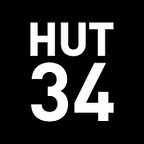The Hut, IoT, and Agriculture: A Computer Scientist’s Perspective
Modern technology is all about big data. With recent advancements in large-scale processing and artificial intelligence, computers can use large stores of data to achieve almost anything, from learning to diagnose medical issues and engage in realistic conversation to writing novels and research papers autonomously. These methods, however, require vast amounts of data, so the provision of large, publicly accessible datasets is of critical importance in creating further applications.
As a computer scientist working in agriculture, I utilise weather sensors installed at key locations to build weather models and simulate growing conditions; however, there is a fundamental limitation in this whereby if any local disturbances affect a sensor, I have to resort to much less reliable estimations. Imagine if, instead, a network of connected sensors was installed throughout the areas of interest and surrounding neighborhoods: then, probabilistic patterns could be extrapolated without relying on any individual data point. If this were scaled up worldwide, agronomists and climate scientists would have access to all the data they would ever need to monitor and improve the world.
In order to prototype this concept, I built a small temperature sensor and connected it to the Hut 34 Network. Using a simple webhook interface which took very little time to set up, I had my sensor reporting the temperature on request to anyone on the network. It was also very simple to have the sensor recording data points at a fixed interval, and this whole history could then conceivably be broadcast to anyone who wants it. I could just as easily set up any number of these sensors scattered around the local area, all beaming to a central hub which records and broadcasts the measurements, or each individually talking to the network.
So why use Hut34 for this, rather than a simple web server? On one level, Hut34 would allow me to scale up my sensor network almost indefinitely — I could sell small, cheap sensor boxes to anyone willing to contribute, or send boxes of them to other researchers around the world, and all the sensors would be networked for me, or anyone else, to query whenever I want.
On a more instinctive level, connecting my sensors to the Hut34 Network would also allow me to monetise my sensor data in a simple and fair way, earning a small amount of currency every time my sensor is accessed if it provides valuable data. This also provides people with incentive to buy my sensor boxes: For example, pay me ten dollars now, place this box outside your house, and then generate revenue every time I (or, again, anyone) needs to access the data.
Cheap weather sensors are clearly only one application of this networked system, but illustrate the value of making monetisation of knowledge accessible to everyone.
The world at the moment has an abundance of problems that can be solved, but large-collection of data on the ground will help to enable the scientists, engineers and intelligent algorithms who can use that data to solve those problems.
Fred Westling B.Eng B.Sc
Computer Scientist & Engineer
